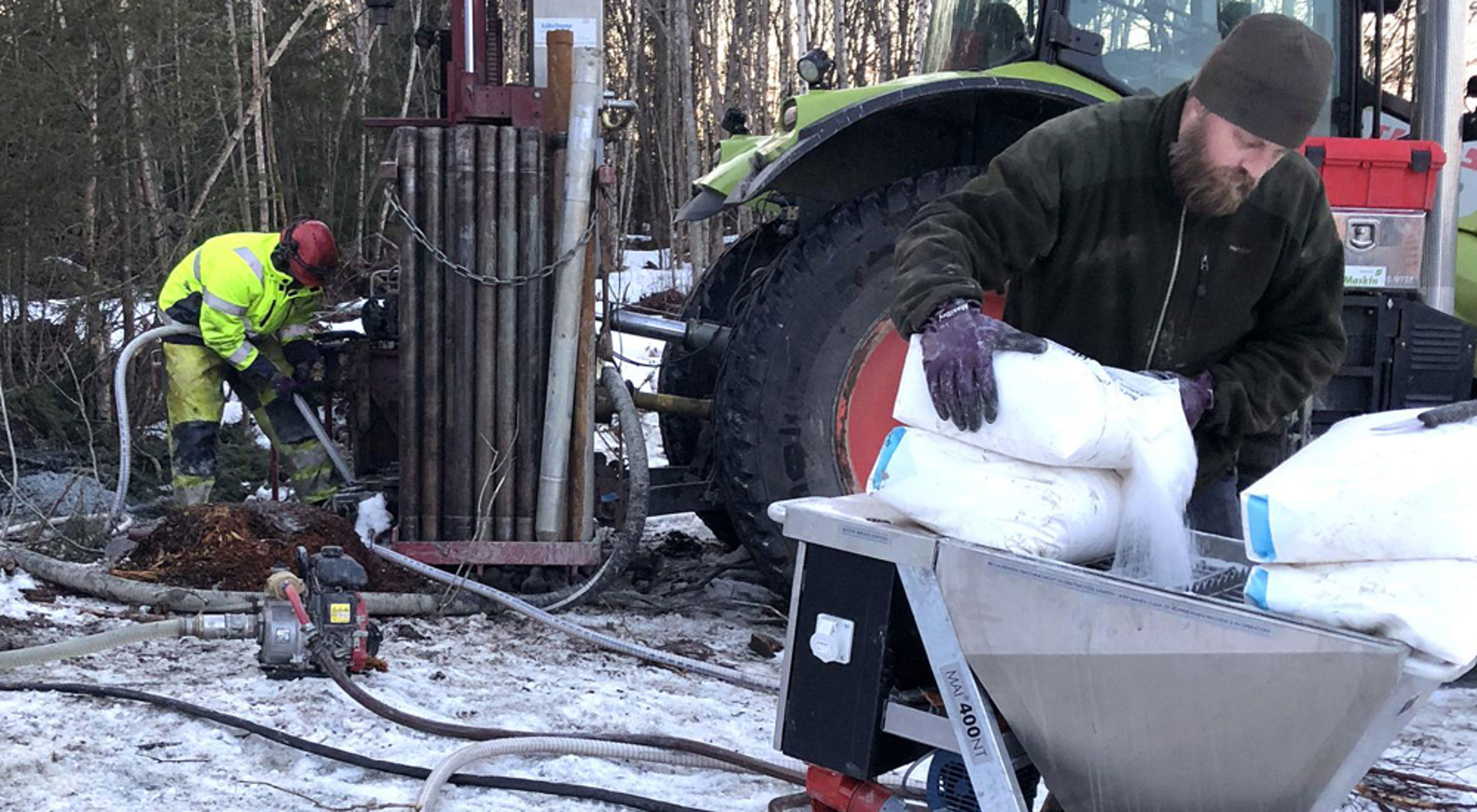Salt stabilizing of quick clay
This is a research project with main goal is to find a sustainable, non-invasive, safe and time-efficient installation method for salt wells in quick clay areas. The project is funded by REFMIDT as well as the involved project participants, Stjørdal municipality, the Norwegian Public Roads Administration, NVE, Bane Nor, NGI and Multiconsult.

Today, quick clay areas are usually secured with large embankments at the slope foot, which will stabilize the slope, often also in combination with reshaping and levelling of the overlying terrain to reduce the slope steepness. Such large terrain interventions cannot, in some cases, be carried out due to terrain restrictions, existing buildings, infrastructure, conservation assets, environmental issues or low guarantee against slope failure during the construction phase.
Soil reinforcement
Lime-cement piling is often used as a basic reinforcement in construction projects in areas with quick clay, especially in connection with road projects. However, this method leads to large CO2 emissions from cement production. Since lime-cement piling can increase the risk of triggering quick clay landslides during the installation phase, the method must be used with caution as a safeguard against quick clay slopes.
There are several examples of abandoned stabilizing and development projects in quick clay areas because of the inability to obtain a satisfactory result using current stabilizing methods.
Wells filled with potassium chloride (KCl) can be used as an alternative to conventional stabilizing methods. There is currently no standard installation method for such salt wells. This pilot project will therefore develop the new stabilizing method to:
- prevent landslides in natural and developed quick clay slope areas and increase the safety of people living in and frequenting such areas
- serve as a sustainable alternative to lime-cement pilings and backfills in development projects, thus reducing the carbon footprint
- secure the feasibility of development projects
- preserve different types of landscapes, environmental values and cultural monuments
- enable areas that, as of today, cannot be built up due to poor ground conditions available for development
- increase safety during the construction phase.
Installation methods
Work Package 1 tests different installation methods for salt wells in stabilizing quick clay areas. Of the four installation methods tested, the method of total sounding, cross-bore drill bit and KCl rods is preferred because of the following:
- maintaining control over the amount and to which level the salt is installed
- avoiding the salt being flushed over the terrain surface
- simple and quick to install in the field.
The installation procedure for salt wells is relatively time-consuming when compared with the installation of lime-cement piles and vertical drain. The advantage is, however, that salt wells can be installed in uneven terrain without generating pore water overpressure, with light equipment that any company with geotechnical drilling rigs can perform.
The report for Work Package 1 can be seen here (Norwegian text only).
Cost-effectiveness assessments
Work package 2 deals with assessment of cost-effectiveness and environmental benefits of salt well installation as landslide protection. The cost-effectiveness and environmental benefit of salt well installation is compared with the following conventional stabilising methods, intended for use at a quick clay area at Hegramo in Stjørdal municipality:
- lime-cement stabilization
- topografical measures (load reduction on top and embankment backfill at the foothill to increase resistance).
There are major differences in greenhouse gas emissions associated with the various stabilization alternatives designed for at Hegramo. Measures with lime cement result in significantly greater CO2 emissions compared to topographic measures and stabilization with salt.
Topographic measures lead to the lowest emissions, approximately 10% relative to stabilization with salt, and approximately 1000 times lower than measures with lime-cement. When it comes to cost-benefit assessments of stabilization measures at Hegramo, the factor is positive for all the measures.
Topographic measures have the highest cost-benefit factor, approximately 20 times higher than for stabilization with salt and approximately 10 times higher than for stabilization with lime-cement. When including the cost of CO2 emissions, the cost-benefit of lime-cement stabilization is significantly reduced. For the other methods, the cost of CO2 emissions are of minor importance for cost-benefit.
The report for Work Package 2 can be seen here (Norwegian text only).
